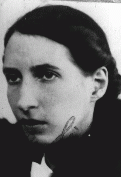You searched for: Ghettos
<< Previous | Displaying results 801-850 of 1236 for "Ghettos" | Next >>
-
Sobibor
ArticleTo carry out the mass murder of Europe's Jews, the Nazis established killing centers that used assembly-line methods of murder. Sobibor was among these facilities.

-
Berga-Elster ("Schwalbe V")
ArticleAt the Berga-Elster subcamp of Buchenwald, prisoners were forced to do dangerous and brutal work in tunnels to support fuel production for the German war effort.

-
Kazimiera Banach Justynowa
ID CardKazimiera was born to Roman Catholic parents in the town of Mierzen. After graduating from a teacher's college in Staniatki, she married Wincenty Justyna, a secondary school teacher. The couple settled in the small industrial city of Piotrkow Trybunalski and raised three children, Jerzy (a boy), Danuta and Maria. Kazimiera worked as a school teacher. 1933-39: With their combined incomes the Justynas were able to buy a plot of land and build a house. The Germans invaded Poland on September 1, 1939, and…
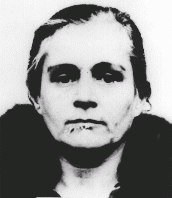
-
Maria Justyna
ID CardMaria was born to Roman Catholic parents in the industrial town of Piotrkow Trybunalski in central Poland. Her father and mother were school teachers. Maria attended grade school and secondary school in Piotrkow. She and her older sister, Danuta, became friends with two Jewish girls, Sabina and Helena Szwarc. Although their houses were more than a mile apart, the girls often played together. 1933-39: The Germans invaded Poland on September 1, 1939, and occupied Piotrkow four days later. Most schooling for…
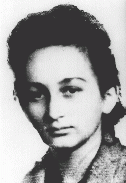
-
Welek Luksenburg
ID CardWelek grew up in Dabrowa Gornicza, an industrial town in western Poland. His father, Simcha, was a wholesale meat merchant and his mother, Rozalia, served as president of the local chapter of the Women's International Zionist Organization. Welek's older brother, Szlomo, was a dentist. The Luksenburgs were among the several thousand Jews who lived in Dabrowa Gornicza. 1933–39: Like many other children in the town, Welek attended public school. Because his family was very religious, he did not attend…

-
Eugeniusz Rozenblum
ID CardEugeniusz's parents married in 1922 in the Soviet Union, where his father owned a textile mill. Fearing arrest by the Soviets for being "bourgeois," Eugeniusz's parents fled to Poland, where Eugeniusz was born. 1933-39: Eugeniusz was a secondary school student and was preparing to enter university, either in Poland or at the Hebrew University in Palestine. The German occupation of Lodz in September 1939 interrupted his schooling. One month after the occupation, a German soldier came to his family's door…

-
David Bayer
ID CardDavid was the second of four children born to religious Jewish parents in Kozienice, a town in southeastern Poland. His father, Manes, owned a shoe factory that supplied stores throughout the country. His mother, Sarah, took care of the home and children, and helped in the factory. Kozienice had a thriving Jewish community that constituted over half of the town's population. 1933–39: For most of the 1930s, David spent his days going to school, playing sports, and working in his father's shoe factory.…

-
György (George) Pick
ID CardGyörgy was the only child of middle class Jewish parents living in the Hungarian capital of Budapest. His father, Istvan, was an engineer responsible for producing hydraulic grape presses for wineries. His mother, Margit, worked as a legal secretary. 1933–39: In 1938 and 1939, Hungary’s authoritarian government passed the first in a series of major anti-Jewish laws. The legislation severely restricted the participation of Jews in the economy and defined them in racial terms, much like the Nuremberg…
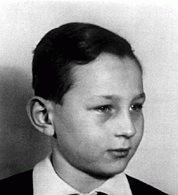
-
Tania Marcus
ID CardTania grew up in Smorgonie, a Polish town where Jews constituted more than half of the population. Her father was a successful businessman who sold farming equipment and purchased flax for export. Her grandfather, an affluent merchant, traveled frequently and brought the first truck to Smorgonie. The Marcuses took part in the town's vibrant Jewish culture, attended the theater, and hosted discussions about art in their home. 1933–39: On September 1, 1939, German troops invaded Poland, triggering World…
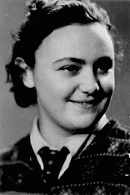
-
Sam Spiegel
ID CardSam was the eldest of five children born to Jewish parents in Kozienice, a town in east central Poland. His father owned a shoe factory and his mother cared for the children and the home. Kozienice had a thriving Jewish community that made up about half of the town's population. 1933–39: On September 1, 1939, German troops invaded Poland. That morning the Spiegels heard an air raid siren blaring and quickly left their house. Fifteen minutes later a bomb struck the building. Sam was just 17 years old.…
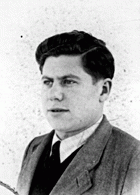
-
Susan Strauss
ID CardSusan grew up in Vacha, a small Thuringian town where her family had lived for more than 400 years. Her father, Herman, owned a general store and her mother, Bertha, took care of the home and children. Susan had a younger sister Brunhilde. The Strausses were one of about 25–30 Jewish families living in Vacha. 1933–39: Soon after the Nazis took power, many of Susan's friends stopped playing with her. In 1938 she was forced to leave the public school. That November, the Nazis unleashed a wave of pogroms…
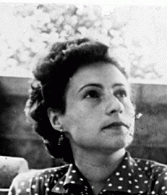
-
Welwel Kisielnicki
ID CardWelwel lived with his wife, Feiga, and their three children in the small, predominantly Jewish town of Kaluszyn, which was 35 miles east of Warsaw. The Kisielnickis were religious and spoke Yiddish in their home. Welwel was a merchant and often traveled, by horse and wagon, to Warsaw on business. 1933-39: The Kisielnicki family's hopes that the war wouldn't reach Kaluszyn have been shattered. Last week, a German plane flew over their town and dropped a bomb on people waiting in line outside a bakery.…

-
Pinchas Galperin
ID CardPinchas was one of 16 children born to a Jewish family. Only nine of the Galperin children lived to adulthood. Pinchas' father worked as a typesetter for a Jewish newspaper and his mother ran a small grocery store. After World War I, Pinchas married Sara Bernstein and the couple moved to Siauliai, Lithuania, where they raised three children. 1933-39: Pinchas and Sara owned and ran a dairy store where they sold milk, butter and cheese that they bought from local farmers. Every morning they would rise early…
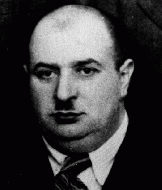
-
Judith Kalman
ID CardJudith was the only child born to a Jewish couple who lived in Hatvan, a small town 36 miles northeast of Budapest. Judith's father worked in his brother's business, marketing grains and other agricultural products purchased from local farms. When she was 3, Judith gave her first public recitation of poetry, an interest that she pursued throughout her childhood. 1933-39: Judith's family wasn't religious--they were Hungarians who happened to be Jewish, and their family was well-liked in Hatvan. But in the…

-
Erika Neuman
ID CardErika was born in Znojmo, a town in the Czech region of Moravia with a Jewish community dating back to the 13th century. Her father was a respected attorney and an ardent Zionist who hoped to immigrate with his family to Palestine. In 1931 the Neumans moved to Stanesti, a town in the Romanian province of Bukovina, where Erika's paternal grandparents lived. 1933–39: In Stanesti, Erika attended the public school as well as the Hebrew school, which her father had helped to found. She loved to play with her…
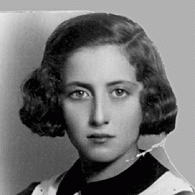
-
Sabina Szwarc
ID CardSabina grew up in a Jewish family in Piotrkow Trybunalski, a small industrial city southeast of Warsaw. Her family lived in a non-Jewish neighborhood. Her father was a businessman and her mother was a teacher. Both Yiddish and Polish were spoken in their home. In 1929 Sabina began public school, and later went on to study at a Jewish secondary school. 1933-39: On September 1, 1939, Germany invaded Poland. Four days later, German troops streamed into Sabina's city. After one month of occupation, her father…
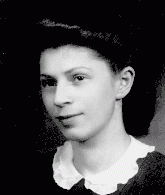
-
Lore Heumann
ID CardThe younger of two girls, Lore was born to Jewish parents in a village close to the Belgian border. The Heumanns lived above their general store. Across the street lived Lore's grandfather, who kept horses and cows in his large barn. When Lore was a year old, her family moved to the city of Lippstadt. The Lippe River flowed beyond the large garden in back of their house. 1933-39: When Lore was 6, her family moved to the nearby city of Bielefeld, where she entered public school. A year later, she and her…
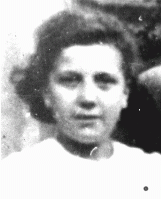
-
Lonia Goldman Fishman
ID CardLonia had three sisters and one brother. Her parents owned a cotton factory in the town of Wegrow. The Goldmans were a religious family, strictly observing the Sabbath, the Jewish holidays and the dietary laws. 1933-39: After studying all day at public school, Lonia attended a religious school for girls called Beis Yakov where she studied Hebrew, the Bible and Jewish history. Later, when she was in high school, a private tutor came to the house to teach her Hebrew. Lonia's favorite hobby was knitting.…
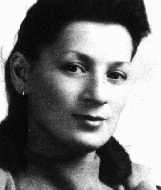
-
Thomas Buergenthal
ID CardThomas Buergenthal was born in May 1934 in the town of Ľubochňa, Czechoslovakia. His parents, Mundek and Gerda, were Jews who had fled the Nazi rise to power in Germany. In Ľubochňa, Mundek ran a hotel that welcomed other refugees and exiles fleeing Nazi persecution. 1933-39: In 1938-1939, Nazi Germany dismantled the country of Czechoslovakia and created the satellite state of Slovakia. As a result, Thomas and his family fled from Slovakia to neighboring Poland. They hoped eventually to immigrate to…
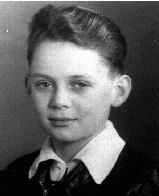
-
Itka Wlos
ID CardItka was raised in a Yiddish-speaking, religious Jewish family in Sokolow Podlaski, a manufacturing town in central Poland with a large Jewish population of about 5,000. Itka came from a poor family. After completing her public schooling in Sokolow Podlaski at the age of 14, she began to work. 1933-39: Itka was a young woman, unmarried and living with her parents when war between Germany and Poland broke out on September 1, 1939. German aircraft bombed Sokolow Podlaski's market and other civilian targets…

-
Max Rosenblat
ID CardMax's parents, Taube and Itzik, first met as children in 1925. Taube was the daughter of a tailor who hired apprentices in his shop, and Itzik was one such apprentice. The Jewish youngsters fell in love and dreamed of getting married even though Taube's family frowned upon the match. 1933-39: In 1938 Taube and Itzik married. The couple lived in an apartment on 49 Zeromskiego Street in Radom, where Itzik opened a women's tailor shop. Max was born in July 1939. He had curly hair and blue eyes like his…
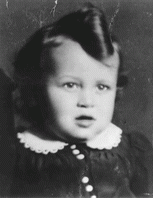
-
Dora Eiger
ID CardDora grew up in the industrial city of Radom, known for its armaments industry. Though fervently Jewish, her Yiddish-speaking parents differed from each other in that her mother was deeply religious while her father was not religious and was an ardent member of the Zionist Labor Party. Also known by her Jewish name D'vora, Dora attended Jewish schools and joined a Zionist youth organization. 1933-39: When Dora visited her uncle near the German border in 1936, she first noticed anti-Jewish placards and…
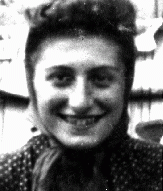
-
Chaim Werzbe
ID CardChaim was raised in a Yiddish-speaking, religious Jewish family in Sokolow Podlaski, a manufacturing town in central Poland with a large Jewish community of about 5,000. The economic activities of most of the townspeople were closely tied to those of nearby Warsaw and surrounding farming communities. As a young man, Chaim liked to play chess and was active in a local Zionist organization. 1933-39: Chaim made a living in the grain business. After settling down, he married a widow who was older than he and…

-
Feiga Kisielnicki
ID CardFeiga lived with her husband, Welwel, and their three children in the small, predominantly Jewish town of Kaluszyn, which was 35 miles east of Warsaw. The Kisielnickis were religious and spoke Yiddish in their home. Feiga was a housewife and her husband was a merchant who often traveled, by horse and wagon, to Warsaw on business. 1933-39: Germany recently invaded Poland, and several days ago, German forces fought Polish troops in a battle right here in Kaluszyn. Half the town, including Feiga's house, has…
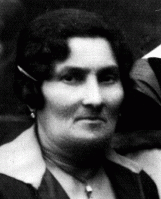
-
Lisl Winternitz
ID CardLisl was the youngest of two children born to a Jewish family in the Czechoslovakian capital of Prague, a city with a Jewish community that dated back to the eleventh century. Lisl's family lived on Karlova Street in the Karlin district of the city. Lisl's father owned a wholesale business that sold floor coverings. 1933-39: Lisl was 12 when, on March 15, 1939, the German occupation forces entered Prague. She went to school that day and a teacher shouted at her, "You dirty, filthy Jew," and then spat in…
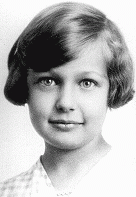
-
Wilek Loew
ID CardWilek was the son of Jewish parents living in Lvov, a large city in southeastern Poland. His family owned and operated a honeywine winery. Although they lived amongst Poles and Ukrainians, Wilek's family spoke Hebrew, German and Polish at home and were among Lvov's Jewish intelligentsia. When Wilek was 4, his father died of a heart attack. 1933-39: Jews were often discriminated against in Poland. They found it hard to gain access to schools and jobs. In 1939 Wilek managed to pass the entrance exam and…
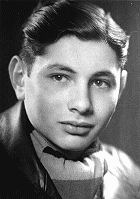
-
Feiga Malnik
ID CardRaised in a Jewish family, Feiga lived with her husband, Josef, in Kovno, a city with a large Jewish community of 38,000. Kovno was situated at the confluence of two rivers, and with its opera company, chic stores and lively nightclubs, it was often called "Little Paris." Feiga was a beautician and Josef was a barber, and together they ran a shop in downtown Kovno. 1933-39: Every day Josef and Feiga walk to their shop, which is near their house. It's hard work, being a beautician--Feiga is on her feet…

-
Liliana Guzenfiter
ID CardAn only child of middle-class Jewish parents, Liliana was raised in a mixed neighborhood of Christians and Jews in Poland's capital. Her father ran a jewelry business and was a reserve officer in the Polish army; her mother was a housewife. Liliana dreamed of going to the Sorbonne and becoming Poland's second female district attorney. 1933-39: The worst part of going to school was being harassed and called a "filthy Jew." Liliana petitioned to enter a prestigious Catholic high school where she was…

-
Eva Braun Levine
ID CardEva was the second daughter of five children born to Jewish parents. Her father dealt in real estate, and the family owned the apartment building in which they lived. The building had an elevator, a luxury for that time. Eva finished high school, and she began working for her father and studying history at a small local university. 1933-39: Nightlife for young people was lively in Lodz, and Eva often went dancing with her boyfriend, Herman. In 1939 they married. Then the Germans invaded. One day, the…
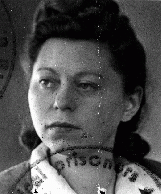
-
Berta Rivkina
ID CardBerta was the youngest of three girls born to a Jewish family in Minsk, the capital of Belorussia. Before World War II, more than a third of the city was Jewish. Berta's father worked in a state-owned factory building furniture, an occupation in which several of his relatives also made a living. 1933-39: Berta and her family lived on Novomesnitskaya Street in central Minsk, only a few blocks from the Svisloch River. Her older sister, Dora, loved to swim there in the summer. By the time Berta was in the…
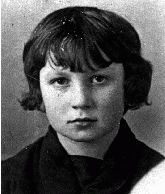
-
Dora Rivkina
ID CardDora was the second of three girls born to a Jewish family in Minsk, the capital of Belorussia. Before World War II, more than a third of the city was Jewish. Dora and her family lived on Novomesnitskaya Street in central Minsk. Dora's father worked in a state-owned factory building furniture. 1933-39: As a young girl, Dora was athletic and excelled at swimming and dancing. When she was in the second grade, she was chosen to dance the lead part in a New Year's performance. She was also a member of the…
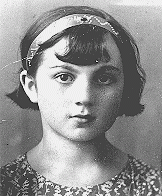
-
Heinz Rosenberg
ID CardHeinz was the youngest of three children born to a Jewish family in the German university city of Goettingen. His father owned a linen factory that had been in the family since it was founded by Heinz's grandfather. Goettingen had a small Jewish population, and only one synagogue. Heinz went to public school in the city. 1933-39: In 1933 the Nazis took power in Germany. A year later Heinz's family's factory was seized. Three SA men came to their house. An officer set a gun on the table and calmly informed…

-
Kathe Ert Reichstein
ID CardKaethe was the fifth of nine children born to Jewish parents. After graduating from secondary school, Kaethe worked with her father in his bakery. In 1918 she married Samson Reichstein, and the couple settled in Hanover, where Samson was based as a salesman. Their son Herbert was born in 1920. As his wife, Kaethe was officially required to take on her husband's citizenship. 1933-39: In 1938 Kaethe and her husband succeeded in obtaining an exit visa for the United States for their 18-year-old son Herbert…

-
Henia Ring
ID CardThe youngest of two children, Henia was born to a Jewish family in the town of Krzepice. By the early 1930s, the Jewish population of Krzepice comprised more than 40 percent of the town's inhabitants. Henia's father made his living trading cattle in the area. Henia attended a public elementary school. 1933-39: On September 1, 1939, the Germans invaded Poland; a day later, they entered Henia's town. Her family tried to escape to Warsaw but the German forces quickly overtook them and ordered them back to…
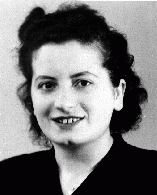
-
Mina Beker
ID CardMina, born Mina Friedman, was the youngest of four daughters born to a Jewish family in the Lithuanian town of Jonava. At the age of 18, Mina married Osser Beker, a lumber dealer. The couple settled in Jonava where Mina worked as a seamstress. The Bekers had two sons and two daughters, but their oldest son died in a childhood accident. 1933-39: Mina's son Abe attended a Jewish religious school in Jonava. But since Mina had received an extensive Jewish education, she decided to teach her daughters at home.…

-
Carl Heumann
ID CardCarl was one of nine children born to Jewish parents living in a village near the Belgian border. When Carl was 26, he married Joanna Falkenstein and they settled down in a house across the street from his father's cattle farm. Carl ran a small general store on the first floor of their home. The couple had two daughters, Margot and Lore. 1933-39: Carl has moved his family to the city of Bielefeld, where he is working for a Jewish relief organization. Requests from this area's Jews to leave Germany have…
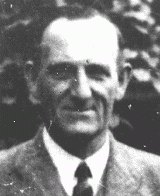
-
Aron Dereczynski
ID CardAron and his three sisters were raised in a traditional Jewish family in the town of Slonim. Most of Slonim's inhabitants were Jewish, and the town had a long tradition of Hasidic scholarship. Aron's father, Chaim, owned a yard-goods and clothing store. 1933-39: Aron attended a Hebrew-language middle school and was active in the Zionist youth movement, Ha-Shomer ha-Tsa'ir. He had been accepted to study in an agricultural school in Palestine when war broke out in September 1939 and Slonim fell under Soviet…
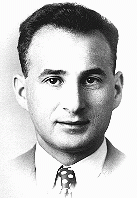
-
Wilhelm Edelstein
ID CardWilhelm was the oldest of two children in a Jewish family living in the Habsburg capital of Vienna. Shortly after Wilhelm was born, World War I broke out. Because of food shortages, Wilhelm and his mother left for her hometown of Hostoun, near Prague. After the war they returned to Vienna where his father had remained to run his shoe business. As a young man, Wilhelm worked for his father. 1933-39: In March 1938 Germany annexed Austria. Soon after, the Germans arrested Wilhelm because he was a Jew dating…

-
Sara Galperin
ID CardSara, born Sara Bernstein, was one of six children in a Jewish family in the Lithuanian village of Karchai. Her father was a farmer. Sara attended secondary school in Jonava and in 1920 she moved to Siauliai, where she met and married Pinchas Galperin. The couple owned and ran a dairy store, selling butter, milk and cheese. They had three children--two sons and a daughter. 1933-39: In addition to running the family store and rising early every morning to buy dairy products from the local farmers, Sara was…
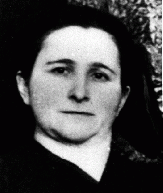
-
Dachau
ArticleDachau was the first and longest operating Nazi concentration camp. Learn about the camp's early years, prisoners, medical experiments, and liberation.
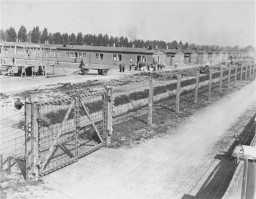
-
Terez Goldberger Kalman
ID CardTerez came from a religious Jewish family. She and her husband, Samuel, raised eight children in Satoraljaujhely, in northeastern Hungary. The Kalmans lived on the outskirts of the city, and in the 1920s they ran a canteen for the soldiers who lived in the nearby barracks. The Kalmans were proud Hungarians; one of their sons had died in World War I. 1933-39: Since Samuel died a few years ago, Terez has been alone here in her house in Satoraljaujhely. Many of her children live nearby, though, so her home…
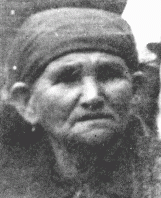
-
Helen Lebowitz
ID CardHelen was one of seven children born to a Jewish family in Volosyanka, a town in Trans-Carpathian Ruthenia. Nestled in the Carpathian mountains, Volosyanka was a small town with a sizable Jewish community. Jewish life revolved around the town's synagogue. Helen grew up in a close-knit family; many relatives lived nearby. Her father owned a shoe store in the town. 1933-39: When Helen was 11 years old, Hungary occupied the Transcarpathian region. At once, Jews were prohibited from holding government…
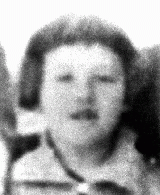
-
Janina Prot
ID CardJanina's parents had converted from Judaism to Catholicism in the 1920s. When Janina was 4 years old, her parents divorced; Janina left Warsaw and went to live with her father near the Polish town of Radom, while her brother Tomas remained in Warsaw with his mother. Janina, or Jana as she was affectionately known, loved to read. 1933-39: When Jana was 12 she moved back to Warsaw to attend secondary school, and stayed with her mother. A year later, on September 8, 1939, the Germans were bombing Warsaw.…

-
Lifcia Najman
ID CardLifcia and her brother and two sisters were born to religious Zionist parents in Radom, a major center of Polish leather production. The city had more than 100 tanneries and shoe factories. Lifcia's father worked as a leather broker, matching manufacturers with clients who sought specific types of leather. The Najman family lived in a two-room apartment in the center of town. 1933-39: At secondary school, Lifcia learned math, science, Polish language, history, and German. Three times a week she attended a…
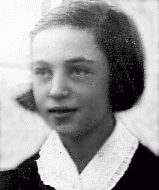
-
Morris Kornberg
ID CardMorris was the youngest of six children born to a religious Jewish family in Przedborz, a south central Polish town with a large Jewish population. Morris' family owned a business that supplied nearby factories with raw metal materials. 1933-39: When Germany invaded Poland in early September 1939 Morris and his family fled to the woods. They returned a few days later; most of the town had been burned down. The Nazis set up a ghetto and ordered everyone age 13 to 50 to report for work details. His family…
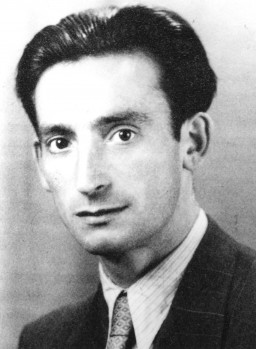
-
Elka Rosenstein
ID CardElka was raised in a large, Yiddish-speaking Jewish family in Sokolow Podlaski, a manufacturing town in central Poland with a large Jewish population of some 5,000. Elka was 14 when she graduated from middle school. After completing her schooling, she became a tailor. Working at home, she made clothes for different clothiers in town. 1933-39: Elka was unmarried and living with her parents when war between Germany and Poland broke out on September 1, 1939. German aircraft bombed Sokolow Podlaski's market…
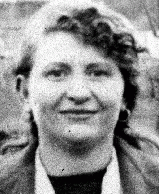
-
Majlech Kisielnicki
ID CardThe second of three children, Majlech was born to Jewish parents living 35 miles east of Warsaw in the small, predominantly Jewish town of Kaluszyn. Majlech's father owned a wholesale grocery store, a restaurant and a gas station, all of which were located on the heavily traveled main road. Majlech attended public elementary school and also received religious instruction. 1933-39: Majlech and his pals, Mindele, Sara and Adam loved to discuss politics. They'd heard the Polish propaganda claiming that…
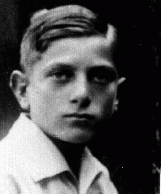
-
Josef Malnik
ID CardRaised in a Jewish family, Josef lived with his wife, Feiga, in Kovno, a cosmopolitan city that was picturesquely situated at the juncture of two rivers and was known as the "Little Paris." Josef was a barber, his wife was a beautician, and together they ran a shop in downtown Kovno. 1933-39: Every day Josef and Feiga walk to their shop which is not far from their house. It's hard work being a barber--Josef is on his feet most of the day, seven days a week including a couple of hours on Sunday. He has…

-
Ruth Gabriele Silten
ID CardGabriele was the only child of Jewish parents living in the German capital of Berlin. Her grandfather owned a pharmacy and a pharmaceuticals factory, where Gabriele's father also made his living. 1933-39: In 1938 the Nazis forced Ruth's grandfather to sell his factory and pharmacy for very little money to an "Aryan" German. After that, her father decided they should move to Amsterdam where it was safer for Jews. She was 5 years old and wanted to stay in Berlin. She didn't understand why she had to leave…
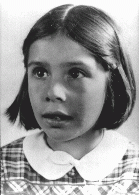
-
Ilse Silten
ID CardIlse, born Ilse Teppich, was the eldest of two daughters born to a Jewish family in the German capital of Berlin. Her father owned a dry cleaning business in the city. When Ilse finished secondary school, she was sent to a finishing school in Switzerland where she studied to be a photographer. In 1931 she married Fritz Silten. 1933-39: In 1933 Ilse gave birth to the couple's only child, a daughter named Gabriele. Five years later, when Fritz's father was forced by the Nazis to sell his business for a…
